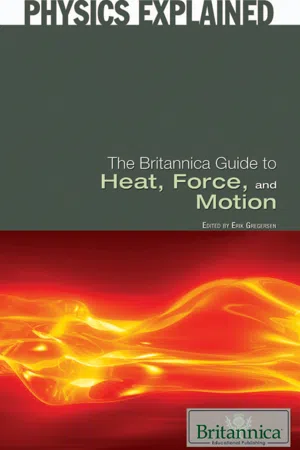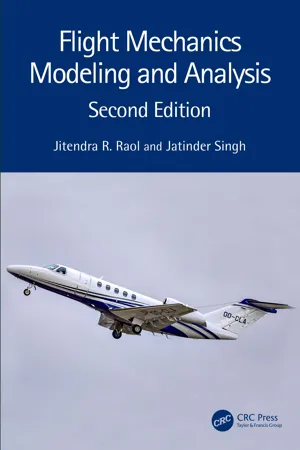Physics
Relative Motion in 2 Dimensions
Relative motion in 2 dimensions refers to the motion of an object as observed from a moving frame of reference. It involves analyzing the position, velocity, and acceleration of an object in two perpendicular directions. This concept is essential for understanding the motion of objects in scenarios where multiple forces and directions are at play.
Written by Perlego with AI-assistance
Related key terms
5 Key excerpts on "Relative Motion in 2 Dimensions"
- eBook - ePub
- Hiqmet Kamberaj(Author)
- 2021(Publication Date)
- De Gruyter(Publisher)
4 Two- and three-dimensional motionIn this chapter, we will discuss the kinematics of a particle moving in two and three dimensions. Utilizing two- and three-dimensional motion, we will be able to examine a variety of movements, starting with the motion of satellites in orbit to the flow of electrons in a uniform electric field. We will begin studying in more detail the vector nature of displacement, velocity, and acceleration. Similar to one-dimensional motion, we will also derive the kinematic equations for three-dimensional motion from these three quantities’ fundamental definitions. Then the projectile motion and uniform circular motion will be described in detail as particular cases of the movements in two dimensions.4.1 The displacement, velocity, and acceleration vectors
When we discussed the one-dimensional motion (see Chapter 3 ), we mentioned that the movement of an object along a straight line is thoroughly described in terms of its position as a function of time,x ( t ). For the two-dimensional motion, we will extend this idea to the movement in thex yplane.As a start, we describe a particle’s position by the position vector r pointing from the origin of some coordinate system to the particle located in thex yplane, as shown in Fig. 4.1 . At timet ithe particle is at point P, and at some later timet fit is at the position Q. The path from P to Q generally is not a straight line. As the particle moves from P to Q in the time intervalΔ t =, its position vector changes fromt f−t ir itor f.Definition 4.1 (Displacement vector).
The displacement is a vector, and the displacement of the particle is the difference between its final position and its initial position. We now formally define the displacement vector for the particle as the difference between its final position vector and its initial position vector:(4.1)Δ r =r f−r i.The direction ofΔ ris indicated in Fig. 4.1 from P to Q. Note that the magnitude ofΔ r - eBook - ePub
- A. D. Johnson(Author)
- 2017(Publication Date)
- CRC Press(Publisher)
Motion of bodies 22.1 Aims
- To introduce the concepts of linear and angular motion.
- To explain the relationships between displacement, velocity and acceleration.
- To explain the relationship between absolute and relative velocities.
- To define the equations used to analyse linear and angular motion.
- To introduce an approach by which linear and angular motion problems can be analysed.
- To explain related topics such as ‘falling bodies’, ‘trajectories’ and vector methods.
2.2 Introduction to Motion
When traffic lights turn to green a car will move away with increasing velocity. The car will cover a distance in a particular direction and will possess a particular velocity at any instant. During this process the car possesses the three basic constituents of motion, namely: displacement, velocity and acceleration. It should be noted that since the car runs on wheels, these will also be in motion and therefore possess displacement, velocity and acceleration. However, the car moves in a linear direction, while the wheels move in an angular direction.2.2.1 Displacement
If a man walks 10 km, there is an indication of the distance between the start position and the final position, but there is no indication of the direction. The 10 km is merely the distance covered and, as such, is a scalar quantity, i.e. possessing magnitude only. Displacement, however, implies a change in position or movement over a distance and gives the position and direction from the start point. Thus displacement is a vector quantity possessing both magnitude and direction.Fig. 2.1 Displacement diagram.Figure 2.1 gives an example of a man who walks 3 km east then 4 km north. He has actually walked a distance of 7 km but has been displaced from his start point by only 5 km.2.2.2 Velocity
Velocity is the value of displacement measured over a period of time. It is the rate over which a distance/displacement is traversed. The magnitude of velocity is often expressed in convenient units such as kilometres per hour or miles per hour; however, these should be regarded as observation and comparison units. For analysis purposes velocity is better expressed in SI units of m/s. - Michael Blundell, Damian Harty(Authors)
- 2014(Publication Date)
- Butterworth-Heinemann(Publisher)
The application of a modern multibody systems (MBS) computer program requires a good understanding of the underlying theory involved in the formulation and solution of the equations of motion. Due to the three-dimensional nature of the problem the theory is best described using vector algebra. In this chapter the starting point will be the basic definition of a vector and an explanation of the notation that will be used throughout this text. The vector theory will be developed to demonstrate, using examples based on suspension systems, the calculation of new geometry and changes in body orientation, such as the steer change in a road wheel during vertical motion relative to the vehicle body. This will be extended to show how velocities and accelerations may be determined throughout a linked three-dimensional system of rigid bodies. The definition of forces and moments will lead through to the definition of the full dynamic formulations typically used in a MBS analysis code.2.2. Theory of vectors
2.2.1. Position and relative position vectors
Consider the initial definition of the position vector that defines the location of point P in Figure 2.1 .In this case the vector that defines the position of P relative to the reference frame O1 may be completely described in terms of its components with magnitude Px, Py and Pz. The directions of the components are defined by attaching the appropriate sign to their magnitudes.(2.1)FIGURE 2.1 Position vector.FIGURE 2.2 Resolution of position vector components.The use of brackets{ } here is a shorthand representation of a column matrix and hence a vector. Note that it does not follow that any quantity that can be expressed as the terms in a column matrix is also a vector.In writing the vector {RP }1/1 the upper suffix indicates that the vector is measured relative to the axes of reference frame O1 . In order to measure a vector it is necessary to determine its magnitude and direction relative to the given axes, in this case O1 . It is then necessary to resolve it into components parallel to the axes of some reference frame that may be different from that used for measurement as shown in Figure 2.2 .In this case we would write {RP }1/2 where the lower suffix appended to {RP }1/2 indicates the frame O2 in which the components are resolved. We can also say that in this case the vector is referred to O2 . Note that in most cases the two reference frames are the same and we would abbreviate {RP }1/1 to {RP }1 .It is now possible in Figure 2.3 to introduce the concept of a relative position vector {RPQ }1 . The vector {RPQ }1- eBook - ePub
- Britannica Educational Publishing, Erik Gregersen(Authors)
- 2010(Publication Date)
- Britannica Educational Publishing(Publisher)
Resonances are not uncommon in the world of familiar experience. For example, cars often rattle at certain engine speeds, and windows sometimes rattle when an airplane flies by. Resonance is particularly important in music. For example, the sound box of a violin does its job well if it has a natural frequency of oscillation that responds resonantly to each musical note. Very strong resonances to certain notes—called “wolf notes” by musicians—occur in cheap violins and are much to be avoided. Sometimes, a glass may be broken by a singer as a result of its resonant response to a particular musical note.MOTION OF A PARTICLE IN TWO OR MORE DIMENSIONS
More complex problems in mechanics involve a particle moving in two or more dimensions. Such problems include those of the pendulum and the circular orbit.PROJECTILE MOTIONGalileo pointed out with some detectable pride that none before him had realized that the curved path followed by a missile or projectile is a parabola. He had arrived at his conclusion by realizing that a body undergoing ballistic motion executes, quite independently, the motion of a freely falling body in the vertical direction and inertial motion in the horizontal direction. These considerations, and terms such as ballistic and projectile, apply to a body that, once launched, is acted upon by no force other than Earth’s gravity.Projectile motion may be thought of as an example of motion in space—that is to say, of three-dimensional motion rather than motion along a line, or one-dimensional motion. In a suitably defined system of Cartesian coordinates, the position of the projectile at any instant may be specified by giving the values of its three coordinates, x (t ), y (t ), and z (t ). By generally accepted convention, z (t ) is used to describe the vertical direction. To a very good approximation, the motion is confined to a single vertical plane, so that for any single projectile it is possible to choose a coordinate system such that the motion is two-dimensional [say, x (t ) and z (t )] rather than three-dimensional [x (t ), y (t ), and z (t - eBook - ePub
- Jitendra R. Raol, Jatinder Singh(Authors)
- 2023(Publication Date)
- CRC Press(Publisher)
3 ]. The chapter ends with a simplified explanation of the physics behind the working of gyroscope.2.2 Kinematics
The kinematics is concerned with the static aspects of mechanics wherein the inherent cause of the motion is not taken into account.2.2.1 Rectangular Cartesian Coordinates
Rectangular Cartesian coordinates are associated with orthogonal xyz axes that are right-handed by convention. Such coordinates are generally used to define position, velocity, and force vectors. For instance, position vector can be defined in terms of its components x, y, and z. Figure 2.1 shows the components of the position vectorR →. Assuming that the components ofR →vary with time, the position vectorR →can be expressed asFIGURE 2.1 Rectangular Cartesian coordinates.(2.1)R →= x( t )i ^+ y( t )j ^+ z( t )k ^wherei ^,j ^, andk ^are unit vectors. It is easy to obtain the velocity vector by differentiating (2.1) for position vector.(2.2)V →= u( t )i ^+ v( t )j ^+ w( t )k ^Further differentiation of the equation forV →shall provide the acceleration(2.3)a →=a x( t )i ^+a yj ^+a zk ^Here,u =,x ˙v =,y ˙w =; andz ˙,a x=x ¨,a y=y ¨a z=z ¨
Index pages curate the most relevant extracts from our library of academic textbooks. They’ve been created using an in-house natural language model (NLM), each adding context and meaning to key research topics.




